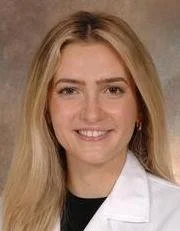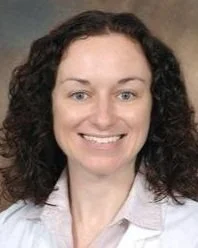Climate and Culture in the UC Emergency Medicine Residency
A Legacy of Advocacy: The Heart of UC Emergency Medicine
The University of Cincinnati Emergency Medicine Residency Program was born from a hospital rooted in justice. Our story begins with Cincinnati General Hospital, one of the nation’s first public hospitals, now UC Medical Center, a place once at the center of a community’s fight for equitable care. From its earliest days, our emergency department has been a beacon for social medicine, advocating for the underserved and caring for those most affected by systemic inequities.
In the summer of 1970, the streets outside our hospital filled with protestors. Led by civil rights leaders from the Avondale neighborhood, residents stood arm in arm demanding justice. Their call was clear: better care for Black patients, more Black physicians, and a hospital that served, not abandoned, the community. These weren’t isolated protests. Just days later, leaders like Reverend Fred Shuttlesworth and NAACP attorney William Bowen spoke out, as did frontline nurses like Mrs. Eloise Jones, who bravely testified about discrimination within the hospital walls.
This movement, courageous, public, and unapologetic, forced change. It exposed racial bias in hiring, uncovered disparities in care, and sparked reforms in how the hospital engaged with the Avondale community. One editorial from The Cincinnati Post in 1970 quoted a protestor saying, “If they won’t let us in the front door, we’ll build our own.” That line echoes today in how we teach, advocate, and lead.
Fast forward to today, and that spirit of activism is alive in our residency program. Our residents care for a patient population shaped by social determinants of health: housing insecurity, language barriers, addiction, victims of violence, and generational poverty. We practice in a city where life expectancy varies by more than 20 years between neighborhoods, and we see it every day in the ED.
Our Culture & Climate Committee builds on this foundation by focusing on advocacy, education, and systemic change. We’ve invited Grand Rounds speakers who challenge the status quo and aim to cultivate a broader culture among our department. Our efforts include recruiting diverse learners, elevating marginalized voices, and integrating health equity into education and clinical practice.
Training at UC means practicing in a city with some of the most pronounced health inequities in the country and being empowered to make a difference. Our patient population is rich in complexity, resilience, and need. We serve as both safety net and champion, guided by a deep commitment to justice, compassion, and the belief that emergency medicine is perfectly situated to influence patient outcomes in highly vulnerable populations.
When you train here, you don’t just learn to manage sepsis or stroke, you learn how to speak truth to power, advocate for your patients, and carry forward a tradition that began on the front steps of our own hospital.
Our Goals
To promote and celebrate diversity of all forms including gender, race, national origin, sexual identity, sexual orientation, age, socioeconomic status, religion, culture, disability, spirituality, and other lived experiences
To actively recruit residents and faculty who are underrepresented in medicine (URiM) and passionate about serving our patient population
To provide a safe and supportive environment for the successful recruitment, retention, and advancement of individuals identifying as underrepresented in medicine
To eliminate disparities in treatment and outcomes through resident education and research
To promote equal access to quality healthcare
| 2025 Demographics | % Residents | % Faculty |
|---|---|---|
| Black / African American | 4 | 5 |
| Latinx | 9 | 2 |
| Asian | 14 | 5 |
| Women | 66 | 35 |
| Parents / Expecting | 16 | 85 |
| LGBTQ+ | 8 | 3 |
| 1st gen college | 29 | 13* |
| 1st gen doctor | 84 | 82* |
| Recruitment Stats | 21-22 | 22-23 | 23-24 | |
|---|---|---|---|---|
| Total applications received that were URiM | 17% | 18% | 14% | |
| Total initial interview invites offered to URiM applicants | 27% | 25% | 21% | |
| All interviewed applicants who were URiM | 24% | 20% | 15% | |
Cincinnati Demographics
Cincy EM Culture Committee
Resident initiated and led, and Department supported, the UCEM Residency Climate and Culture Committee aims to celebrate and increase the diversity of our program and is lead by Dr. Diana Rodriguez and Dr. Vicky Martell with faculty mentor Dr. Erin McDonough. Click on their names to read more about their background or click their names above to reach out via email.
+ Diana Rodriguez, MD PGY-4
I am originally from Miami, FL where I was born and raised by a loving Cuban family. I later went to medical school in Chicago, Illinois where I finally experienced true winter!
With my time off, I enjoy going on walks along eden park with my golden doodle, trying new restaurants and attending whatever free event Cincy has to offer!
We know patient outcomes, satisfaction and access to high quality healthcare are improved by a diverse health care force. As a Latinx provider, I hope to further bridge the gap by recruiting diverse applicants and faculty but also strengthening our current providers knowledge on diversity informed care.
+ Vicky Martell, MD
I grew up in Miami, FL surrounded by my big, loud, and loving Cuban family. I moved to Houston to attend Rice University for undergrad and then stayed for medical school at Baylor College of Medicine.
In my free time, I love swimming in the ocean with family and friends, playing soccer and pickleball, traveling and honing my photography skills, and, of course, always having music playing in the background.
Throughout college and medical school, I found deep fulfillment in serving underserved communities, an experience that shaped my vision for the kind of physician I hope to be. Our patient population is beautifully complex and deserves equally complex, thoughtful solutions informed by diverse perspectives and lived experiences. By learning from and working alongside colleagues and mentors who value this diversity, I hope to help create a healthcare system that recognizes each patient’s full story and meets them where they are.
+ Erin McDonough, MD
I was born and bred in Cincinnati, moved to Chicago for medical school with no intention of coming back to Cincy, but then Cincy EM drew me back! It has been amazing to see how much Cincy has changed (for the better) since I was a kid.
My ideal day off: I sleep in, have some brunch, go hiking with my husband (and sometimes dog if it is a shorter hike...she has short legs), and then make dinner together, either sitting out on our screened-in porch (summer) or in front of the fire (winter).
The culture mission is important to me for a number of reasons. First, we are fortunate to serve a diverse patient population and we need our providers to better reflect the diversity of that population. Second, I have already seen how the culture and mission enriches our residency program and Department. Our Residency Program has traditionally struggled in this area, but we have made some great strides in recent years and I have seen firsthand how patients, residents, and faculty have benefited from prioritizing this mission. For instance, I have seen faculty and residents aim to use more inclusive slides in Grand Rounds, I have seen how a Black resident is able to engender trust in a Black patient when the patient declined lifesaving interventions, I have seen male faculty apologize to female faculty for interrupting during a meeting, just to name a few examples. There is still work to be done in buiding our culture and we are looking for residents who want to play an active role in helping us to continue to push the mission forward.







